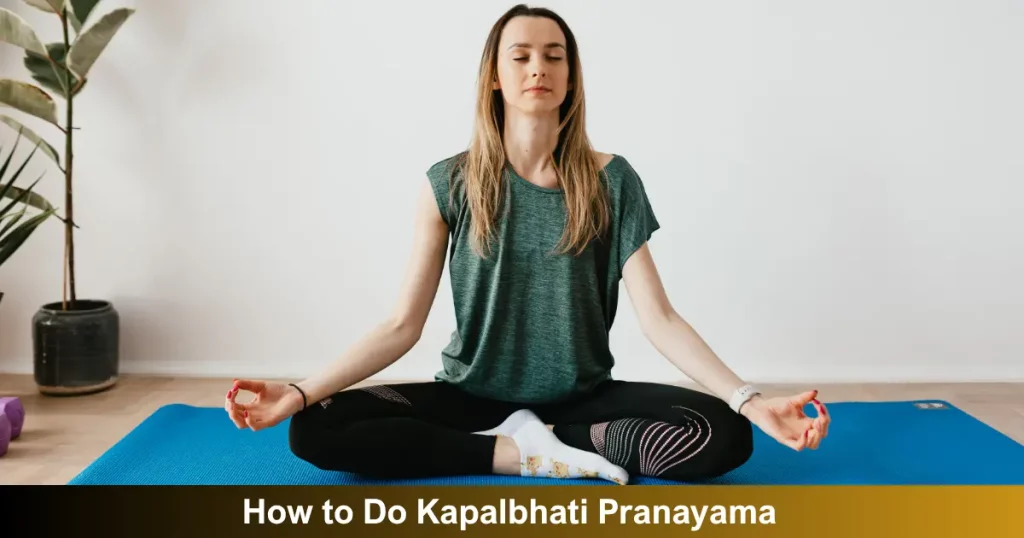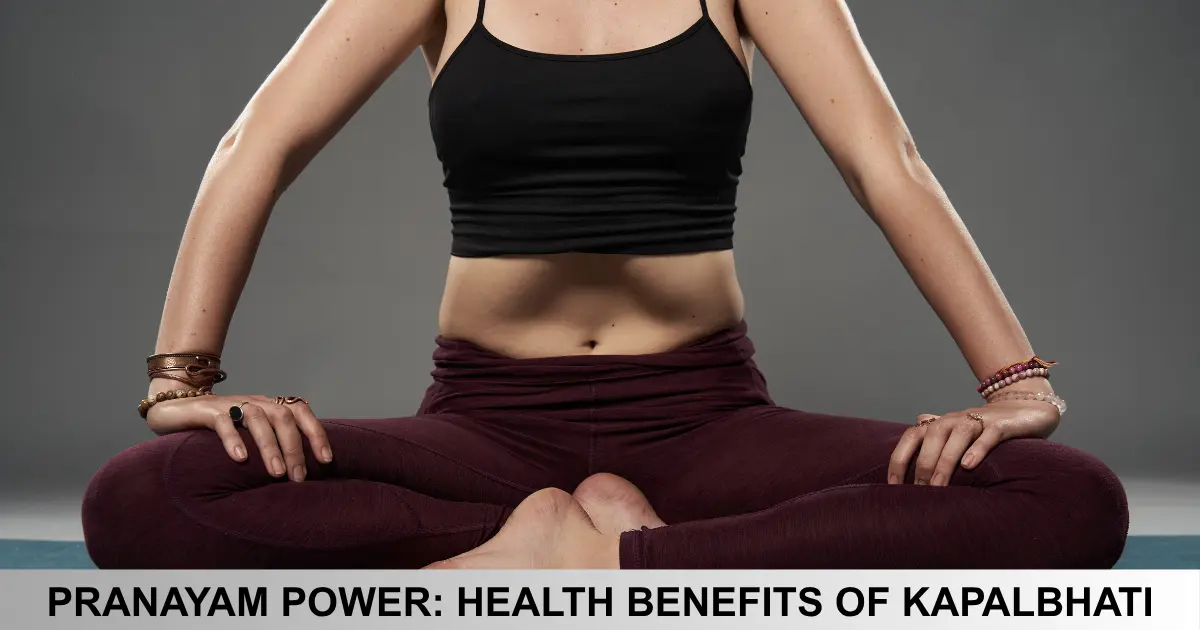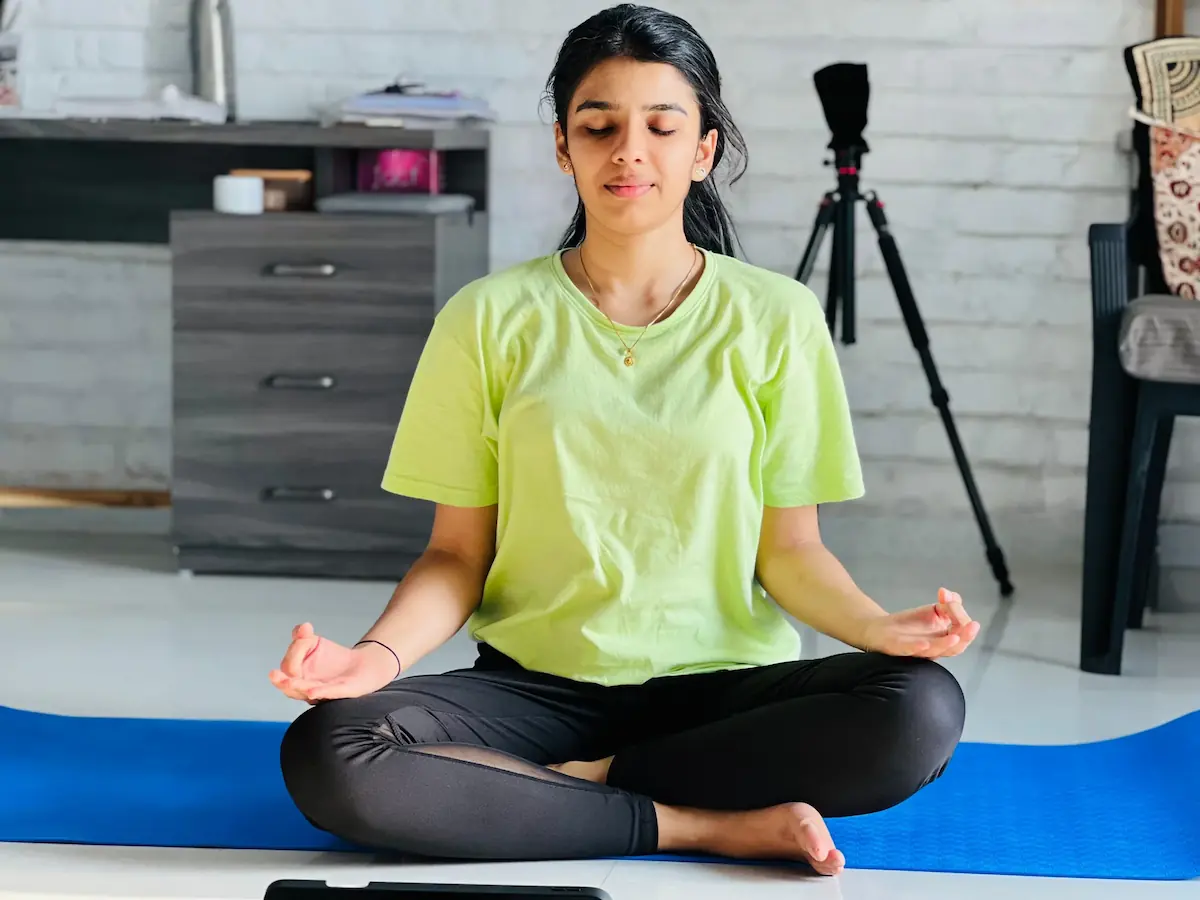What Is Kapalbhati Pranayama?
Kapalbhati Pranayama is one of the most dynamic breathing techniques in yoga. The word “Kapal” means “forehead” or “skull,” and “Bhati” means “shine” or “light.” Together, it means “skull-shining breath”—symbolizing clarity of mind, detoxification, and inner radiance.
This energizing technique involves sharp, rhythmic exhalations and passive inhalations, cleansing both the body and the mind.
Who Can Practice Kapalbhati And When?
Who Can Do It:
- Adults and teens (13+)
- Individuals with mild respiratory issues
- Yoga practitioners seeking detox or core strengthening

Who Should Avoid:
- Pregnant women
- People with heart disease, high blood pressure, or hernia
- Those with recent abdominal surgery
- Always consult your doctor before starting
Best Time to Practice:
- Early morning on an empty stomach
- After freshening up but before breakfast or any intense workout
Step-by-Step Guide: How to Do Kapalbhati Pranayama
Start in Sukhasana (Easy Pose) or Padmasana (Lotus Pose)
If sitting cross-legged is uncomfortable, sit on a chair with a straight back.

Step-by-Step Instructions:
Step 1: Sit Tall and Relax
- Keep your spine erect and shoulders relaxed
- Rest your hands on your knees in Gyan Mudra (thumb and index finger touching)
Step 2: Take a Deep Breath In
- Inhale slowly through the nose
Step 3: Exhale Forcefully
- Contract your abdominal muscles quickly to force the breath out through your nostrils
- Allow the inhale to happen passively (no effort)
Step 4: Maintain the Rhythm
- Perform 20–30 rapid exhalations per round
- After one round, breathe normally and relax for a few seconds
- Start with 2–3 rounds daily
🫁 Breathing Cue:
“Exhale with power, inhale with ease.”
Read More: Crow Pose (Kakasana) & Crane Pose (Bakasana) Step-by-Step Guide
Common Mistakes to Avoid
- ❌ Forcing the inhale
- ❌ Moving shoulders or chest too much
- ❌ Rushing without control
- ❌ Practicing immediately after a meal
- ❌ Overexerting especially if you’re a beginner
Key Health Benefits of Kapalbhati Pranayama
- Improves Lung Function & Respiratory Strength
- Enhances oxygen supply and lung capacity
- Useful in managing asthma and sinus issues
- Supports Detoxification
- Expels carbon dioxide and metabolic waste
- Boosts blood circulation for a natural body cleanse
- Stimulates Digestive System
- Strengthens abdominal organs
- Improves bowel movement and metabolism
- Reduces Abdominal Fat
- Activates core muscles
- Aids in weight management when practiced regularly
Beginner Tips & Modifications
- Start slow: 10 exhalations per round if you’re new
- Sit on a cushion or yoga block if hips are tight
- Use a wall for back support to maintain posture
- Keep a tissue handy if you experience nasal discharge (normal for beginners)
Read More: Matsyasana Yoga (Fish Pose) – Steps, Benefits & Tips
Suggested Daily Routine
| Level | Rounds | Exhalations per Round |
|---|---|---|
| Beginner | 2 | 10–15 |
| Intermediate | 3 | 20–30 |
| Advanced | 3–5 | 40–60 |
⚠️ Always rest for 30 seconds between rounds.
FAQs About Kapalbhati
Q1: Is it okay to practice Kapalbhati daily?
Yes, but start with short durations and gradually increase. It’s ideal to practice consistently for long-term results.
Q2: Can I practice Kapalbhati in the evening?
Morning is best, but evening is okay if your stomach is empty and the mind is calm.
Q3: What should I do if I feel dizzy during Kapalbhati?
Stop immediately and breathe normally. Reduce your speed and exhalations next time. Always practice under guidance if you’re unsure.
Q4: Can Kapalbhati help with anxiety or stress?
Yes, when practiced with mindfulness, it improves oxygen flow and calms the nervous system, helping with emotional balance.
Final Thoughts: Start Small, Shine Bright
Kapalbhati is a simple yet powerful breathwork practice that brings energy, clarity, and healing from within. Even just 5–10 minutes a day can spark visible improvements in your health and mindset. Begin gently, listen to your body, and let the breath guide you toward balance and wellness.
✨ Ready to glow from within? Your journey to a healthier, lighter you begins with your next breath.

